
6 Selected Items
Select an item by clicking its checkbox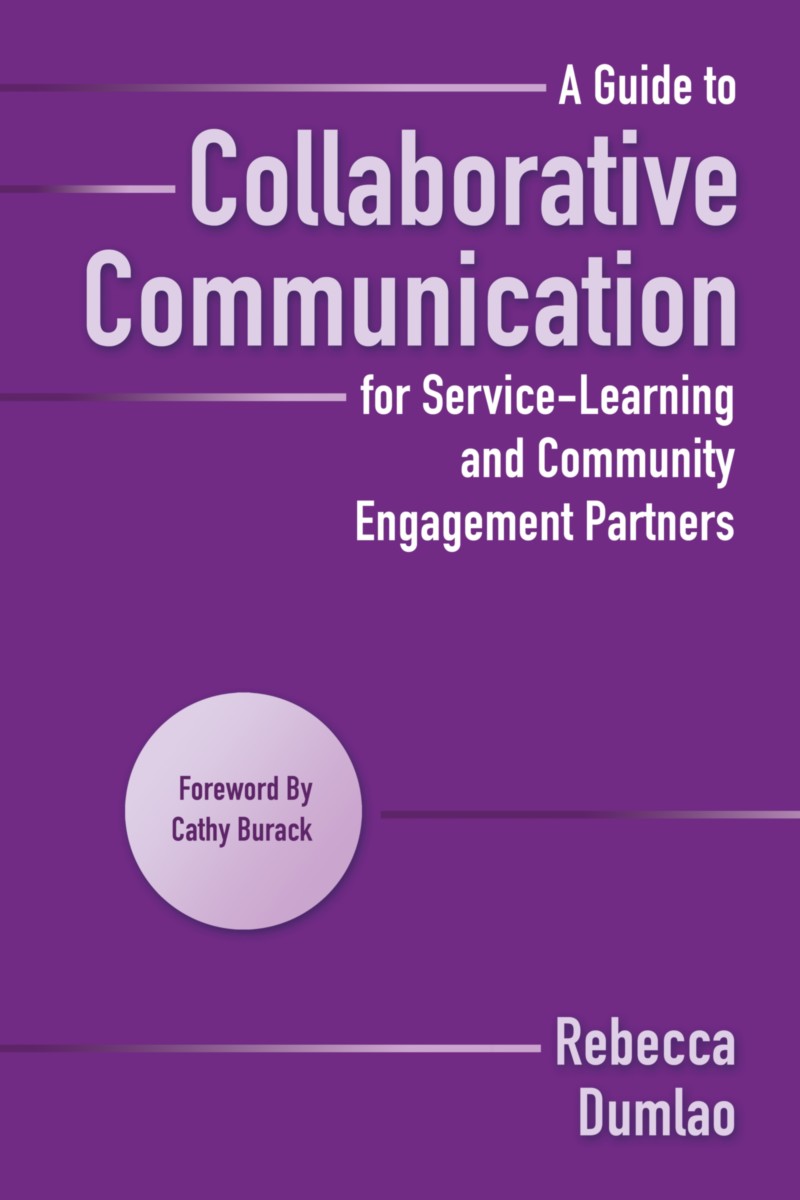
A Guide to Collaborative Communication for Service-Learning and Community Engagement Partners
Additional Info:
This book focuses on partnerships at the most basic level of interaction – between two people as they work toward common goals. Interpersonal dynamics described in this book are intended to guide formal and institutional relationships between members of a community or community organization on the one hand and representatives from campus on the other. Collaborative communication principles and practices shared can form a foundation for individuals to build flexible, lasting ...
This book focuses on partnerships at the most basic level of interaction – between two people as they work toward common goals. Interpersonal dynamics described in this book are intended to guide formal and institutional relationships between members of a community or community organization on the one hand and representatives from campus on the other. Collaborative communication principles and practices shared can form a foundation for individuals to build flexible, lasting ...
Additional Info:
This book focuses on partnerships at the most basic level of interaction – between two people as they work toward common goals. Interpersonal dynamics described in this book are intended to guide formal and institutional relationships between members of a community or community organization on the one hand and representatives from campus on the other. Collaborative communication principles and practices shared can form a foundation for individuals to build flexible, lasting relationships that will weather most challenges and sustain the larger partnerships of their respective organizations.
This book offers a conceptual framework of collaborative communication to build and sustain partnerships, recognizing that relationships change over time as the people involved and their circumstances evolve. Collaborative communication uses a repertoire of knowledge and skills that allow partners to make choices that fit their situation or context and to work through differences and challenges as they occur, to include managing conflict and navigating cultural differences. It further takes into account the different means of communication, whether face-to-face, using e-mail, text messaging, or social media. Readers will appreciate the numerous real world examples that illustrate and bring its key concepts to life.
This book is addressed to partners at all levels focused on community engagement and service-learning. It is intended for preparing college students to work more effectively in the community, as well as for workshops for community and campus members who work with service-learning students. It can equally be used in leadership workshops in academic and community settings. Scholars, students, or community members involved in community engaged research will also find useable ideas for their work.
The appendices offer an annotated bibliography of useful resources and provide readers with a repertoire of activities for building a collaborative communication repertoire. (From the Publisher)
Table Of Content:
Foreword, Cathy Burack
Acknowledgements
Introduction
Ch 1. Thinking About Ourselves and Our Partnerships
Ch 2. Community Engagement and Partnership
Communication
Ch 3. The Collaborative Communication Framework
Ch 4.Practices and Processesfor Collaborative Communication
Ch 5. Leadership in a Changing World
Ch 6. Navigating Cultural Differences while Preserving
Relationships
Ch 7. Dealing with Partner Differences and Conflicts
Ch 8. Creative Change for Future Community Engagement
Appendix: Learning Activities
Annotated Bibliography
References
About the Author
Index
This book focuses on partnerships at the most basic level of interaction – between two people as they work toward common goals. Interpersonal dynamics described in this book are intended to guide formal and institutional relationships between members of a community or community organization on the one hand and representatives from campus on the other. Collaborative communication principles and practices shared can form a foundation for individuals to build flexible, lasting relationships that will weather most challenges and sustain the larger partnerships of their respective organizations.
This book offers a conceptual framework of collaborative communication to build and sustain partnerships, recognizing that relationships change over time as the people involved and their circumstances evolve. Collaborative communication uses a repertoire of knowledge and skills that allow partners to make choices that fit their situation or context and to work through differences and challenges as they occur, to include managing conflict and navigating cultural differences. It further takes into account the different means of communication, whether face-to-face, using e-mail, text messaging, or social media. Readers will appreciate the numerous real world examples that illustrate and bring its key concepts to life.
This book is addressed to partners at all levels focused on community engagement and service-learning. It is intended for preparing college students to work more effectively in the community, as well as for workshops for community and campus members who work with service-learning students. It can equally be used in leadership workshops in academic and community settings. Scholars, students, or community members involved in community engaged research will also find useable ideas for their work.
The appendices offer an annotated bibliography of useful resources and provide readers with a repertoire of activities for building a collaborative communication repertoire. (From the Publisher)
Table Of Content:
Foreword, Cathy Burack
Acknowledgements
Introduction
Ch 1. Thinking About Ourselves and Our Partnerships
Ch 2. Community Engagement and Partnership
Communication
Ch 3. The Collaborative Communication Framework
Ch 4.Practices and Processesfor Collaborative Communication
Ch 5. Leadership in a Changing World
Ch 6. Navigating Cultural Differences while Preserving
Relationships
Ch 7. Dealing with Partner Differences and Conflicts
Ch 8. Creative Change for Future Community Engagement
Appendix: Learning Activities
Annotated Bibliography
References
About the Author
Index
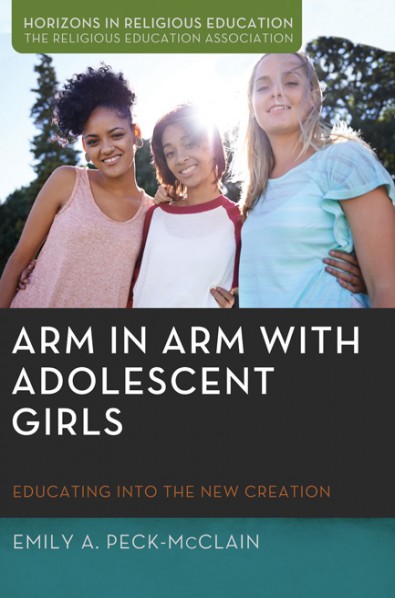
Arm in Arm with Adolescent Girls
Additional Info:
Adolescent girls are filled with passion, excitement, joy, critique, wit, and energy, even as they face and overcome a wide variety of difficult challenges. Some challenges are spirit- and even life-threatening. The stories of more than twenty adolescent girls are put into dialogue with the Apostle Paul, especially in Rom 6–8. Through that perhaps unlikely pairing, those who love and work with adolescent girls will find a depth of understanding and ...
Adolescent girls are filled with passion, excitement, joy, critique, wit, and energy, even as they face and overcome a wide variety of difficult challenges. Some challenges are spirit- and even life-threatening. The stories of more than twenty adolescent girls are put into dialogue with the Apostle Paul, especially in Rom 6–8. Through that perhaps unlikely pairing, those who love and work with adolescent girls will find a depth of understanding and ...
Additional Info:
Adolescent girls are filled with passion, excitement, joy, critique, wit, and energy, even as they face and overcome a wide variety of difficult challenges. Some challenges are spirit- and even life-threatening. The stories of more than twenty adolescent girls are put into dialogue with the Apostle Paul, especially in Rom 6–8. Through that perhaps unlikely pairing, those who love and work with adolescent girls will find a depth of understanding and a call to action. Christian educators, pastors, youth workers, parents, and adolescent girls will find a new way to look at the world around them and a new way to bring Scripture to bear on real-life experience. By offering this powerful, scripturally-grounded approach to the world around us, adolescent girls and others will learn compelling methods for putting a new perspective into action in their personal lives, social circles, and churches. This thoughtful and respectful look at the lives of adolescent girls seeks to equip faithful Christians in the church to use their prophetic voices to call out the sins of racism, sexism, homophobia, and sizeism in the experiences of these strong and resilient girls. (From the Publisher.)
Table Of Content:
Introduction
Ch 1. This Body of Mine
Ch 2. Waiting and Hoping for the New Creation
Ch 3. Pauline Theology for Adolescent Girls
Ch 4. Confronting the Powers in Community
Ch 5. An Epistle to Adolescent Girls and Their Churches
Appendix
Bibliography
Adolescent girls are filled with passion, excitement, joy, critique, wit, and energy, even as they face and overcome a wide variety of difficult challenges. Some challenges are spirit- and even life-threatening. The stories of more than twenty adolescent girls are put into dialogue with the Apostle Paul, especially in Rom 6–8. Through that perhaps unlikely pairing, those who love and work with adolescent girls will find a depth of understanding and a call to action. Christian educators, pastors, youth workers, parents, and adolescent girls will find a new way to look at the world around them and a new way to bring Scripture to bear on real-life experience. By offering this powerful, scripturally-grounded approach to the world around us, adolescent girls and others will learn compelling methods for putting a new perspective into action in their personal lives, social circles, and churches. This thoughtful and respectful look at the lives of adolescent girls seeks to equip faithful Christians in the church to use their prophetic voices to call out the sins of racism, sexism, homophobia, and sizeism in the experiences of these strong and resilient girls. (From the Publisher.)
Table Of Content:
Introduction
Ch 1. This Body of Mine
Ch 2. Waiting and Hoping for the New Creation
Ch 3. Pauline Theology for Adolescent Girls
Ch 4. Confronting the Powers in Community
Ch 5. An Epistle to Adolescent Girls and Their Churches
Appendix
Bibliography
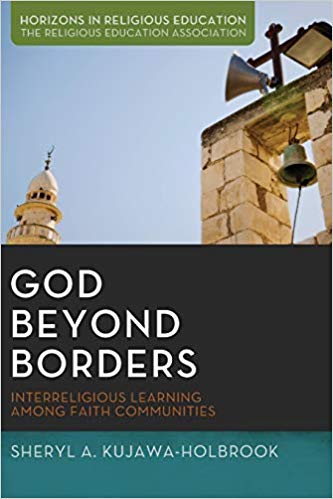
God Beyond Borders: Interreligious Learning Among Faith Communities
Additional Info:
Based on ten years of research, God Beyond Borders is a comprehensive study of interreligious learning in faith communities. The United States is one of the most a diverse countries of the world. Kujawa-Holbrook details the many practices of interreligious learning in faith communities; through interreligious encounters, religious education, shared sacred space, shared prayer, and compassionate action. The book also surveys the field of interreligious learning and investigates some of ...
Based on ten years of research, God Beyond Borders is a comprehensive study of interreligious learning in faith communities. The United States is one of the most a diverse countries of the world. Kujawa-Holbrook details the many practices of interreligious learning in faith communities; through interreligious encounters, religious education, shared sacred space, shared prayer, and compassionate action. The book also surveys the field of interreligious learning and investigates some of ...
Additional Info:
Based on ten years of research, God Beyond Borders is a comprehensive study of interreligious learning in faith communities. The United States is one of the most a diverse countries of the world. Kujawa-Holbrook details the many practices of interreligious learning in faith communities; through interreligious encounters, religious education, shared sacred space, shared prayer, and compassionate action. The book also surveys the field of interreligious learning and investigates some of the more common intentionally interreligious communities--families, clergy groups, chaplaincies, and community organizations. Kujawa-Holbrook combines theory and praxis to make a case for the importance of interreligious learning in all religious organizations. (From the Publisher)
Table Of Content:
Introduction
Ch 1. Ways of Understanding Interreligious Learning
Ch 2. The Transformative Power of Interreligious Encounter
Ch 3. Practices of Interreligious Learning
Ch 4. Sharing Sacred Spaces
Ch 5. Compassionate Action as Interreligious Learning
Ch 6. Initiating Intentional Interreligious Learning Communities
Ch 7. Interreligious Learning in the Future
References
Appendix
Based on ten years of research, God Beyond Borders is a comprehensive study of interreligious learning in faith communities. The United States is one of the most a diverse countries of the world. Kujawa-Holbrook details the many practices of interreligious learning in faith communities; through interreligious encounters, religious education, shared sacred space, shared prayer, and compassionate action. The book also surveys the field of interreligious learning and investigates some of the more common intentionally interreligious communities--families, clergy groups, chaplaincies, and community organizations. Kujawa-Holbrook combines theory and praxis to make a case for the importance of interreligious learning in all religious organizations. (From the Publisher)
Table Of Content:
Introduction
Ch 1. Ways of Understanding Interreligious Learning
Ch 2. The Transformative Power of Interreligious Encounter
Ch 3. Practices of Interreligious Learning
Ch 4. Sharing Sacred Spaces
Ch 5. Compassionate Action as Interreligious Learning
Ch 6. Initiating Intentional Interreligious Learning Communities
Ch 7. Interreligious Learning in the Future
References
Appendix
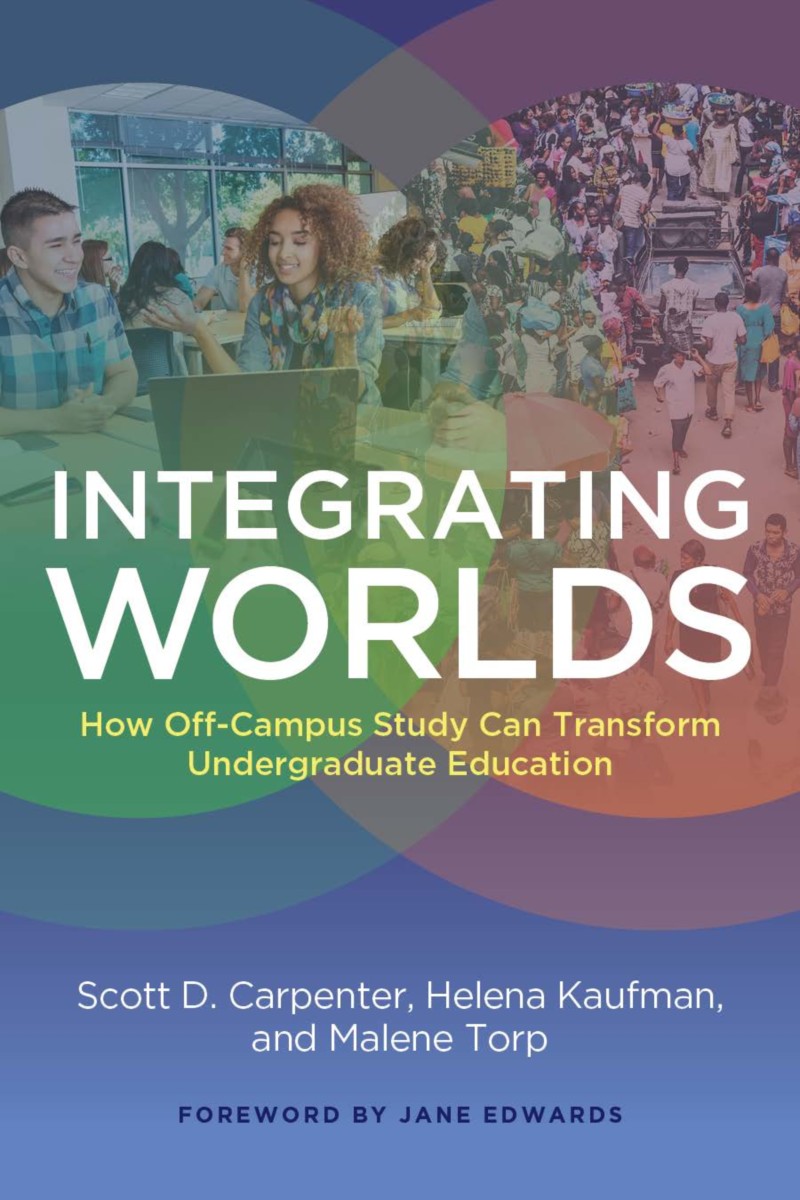
Integrating Worlds: How Off-Campus Study Can Transform Undergraduate Education
Additional Info:
What if our students learn the most when they’re far from campus?
Integrating Worlds demonstrates how high-quality off-campus study epitomizes integrative learning, both supporting and enhancing the entire undergraduate experience.
While off-campus study (both study abroad or study away) occupies a marginal position on most campuses, it has the almost unique capacity to bring together a high concentration of high-impact educational practices. When we combine ...
What if our students learn the most when they’re far from campus?
Integrating Worlds demonstrates how high-quality off-campus study epitomizes integrative learning, both supporting and enhancing the entire undergraduate experience.
While off-campus study (both study abroad or study away) occupies a marginal position on most campuses, it has the almost unique capacity to bring together a high concentration of high-impact educational practices. When we combine ...
Additional Info:
What if our students learn the most when they’re far from campus?
Integrating Worlds demonstrates how high-quality off-campus study epitomizes integrative learning, both supporting and enhancing the entire undergraduate experience.
While off-campus study (both study abroad or study away) occupies a marginal position on most campuses, it has the almost unique capacity to bring together a high concentration of high-impact educational practices. When we combine global learning with collaborative work, shared intellectual pursuits, learning communities, and more, these practices reinforce each other, exerting a multiplier effect that can potentially result in the most intense learning experience our students will have. It can energize and inspire them for the work they will continue to undertake on their home campus.
It thus becomes crucial for us to identify or design high-quality programs that will achieve these goals. Moreover, we need to reimagine off-campus study as an integrated portion of the undergraduate arc—one that begins well before our students depart and continues long after they return. In this way, we help them understand the interconnectedness not only of the world, but also of their own education.
At the same time, the authors recognize material constraints and educational imperatives. Off-campus study costs money; its complexity makes it difficult to assess; it overlaps increasingly with internships and civic engagement; and by its nature, it is more subject to external forces than the on-campus experience. In careful, practical ways Integrating Worlds advances suggestions for dealing with these issues.
This book urges educators to go beyond the episodic ways we currently link on-campus curricula to off-campus experience. While of interest to specialists in international or intercultural education, it speaks most directly to faculty, deans and provosts—many of whom may have little (or dated) experience of study abroad and who thus feel unprepared to address this issue of pressing importance. As our disciplines and institutions face the complexities of a rapidly changing world, this book seeks to fuel the necessary conversations. (From the Publisher)
Table Of Content:
Foreword, Jane Edwards
Acknowledgments
Ch 1. Off-Campus Study: Multiplying Impact
Ch 2. An Integrative Experience: Off-Campus Study and
Liberal Education
Ch 3. The Long Runway
Ch 4. Bringing it Back
Ch 5. A World of Difference: The Culture Question
Ch 6. Engaged Global Citizenship
Ch 7. Measuring Change
Ch 8. Pressure Points: The Future Off-Campus Study
Ch 9. Sustaining Integration
References
Index
What if our students learn the most when they’re far from campus?
Integrating Worlds demonstrates how high-quality off-campus study epitomizes integrative learning, both supporting and enhancing the entire undergraduate experience.
While off-campus study (both study abroad or study away) occupies a marginal position on most campuses, it has the almost unique capacity to bring together a high concentration of high-impact educational practices. When we combine global learning with collaborative work, shared intellectual pursuits, learning communities, and more, these practices reinforce each other, exerting a multiplier effect that can potentially result in the most intense learning experience our students will have. It can energize and inspire them for the work they will continue to undertake on their home campus.
It thus becomes crucial for us to identify or design high-quality programs that will achieve these goals. Moreover, we need to reimagine off-campus study as an integrated portion of the undergraduate arc—one that begins well before our students depart and continues long after they return. In this way, we help them understand the interconnectedness not only of the world, but also of their own education.
At the same time, the authors recognize material constraints and educational imperatives. Off-campus study costs money; its complexity makes it difficult to assess; it overlaps increasingly with internships and civic engagement; and by its nature, it is more subject to external forces than the on-campus experience. In careful, practical ways Integrating Worlds advances suggestions for dealing with these issues.
This book urges educators to go beyond the episodic ways we currently link on-campus curricula to off-campus experience. While of interest to specialists in international or intercultural education, it speaks most directly to faculty, deans and provosts—many of whom may have little (or dated) experience of study abroad and who thus feel unprepared to address this issue of pressing importance. As our disciplines and institutions face the complexities of a rapidly changing world, this book seeks to fuel the necessary conversations. (From the Publisher)
Table Of Content:
Foreword, Jane Edwards
Acknowledgments
Ch 1. Off-Campus Study: Multiplying Impact
Ch 2. An Integrative Experience: Off-Campus Study and
Liberal Education
Ch 3. The Long Runway
Ch 4. Bringing it Back
Ch 5. A World of Difference: The Culture Question
Ch 6. Engaged Global Citizenship
Ch 7. Measuring Change
Ch 8. Pressure Points: The Future Off-Campus Study
Ch 9. Sustaining Integration
References
Index
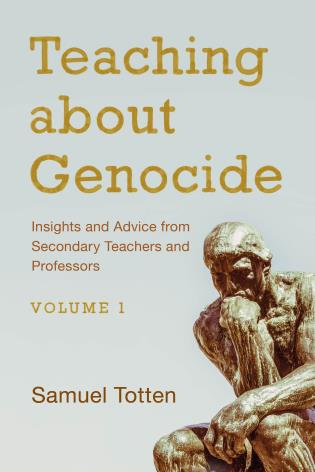
Teaching about Genocide: Insights and Advice from Secondary Teachers and Professors, Volume 1
Additional Info:
Secondary level teachers and professors from various disciplines present their best advice and insights into teaching about various facets of genocide and/or delineate actual lessons they have taught that have been particularly successful with their students. (From the Publisher)
Secondary level teachers and professors from various disciplines present their best advice and insights into teaching about various facets of genocide and/or delineate actual lessons they have taught that have been particularly successful with their students. (From the Publisher)
Additional Info:
Secondary level teachers and professors from various disciplines present their best advice and insights into teaching about various facets of genocide and/or delineate actual lessons they have taught that have been particularly successful with their students. (From the Publisher)
Table Of Content:
Introduction, Samuel Totten
Part One: Insights and Advice from Secondary Level Teachers
Ch 1. Initiating the Study: Clusters or Mind-Maps (Samuel Totten)
Ch 2. Teaching About Genocide: The Basics and Beyond
(Mark Gudgel)
Ch 3. Some Practical Advice for Teaching About Genocide
(Kimberly Klett)
Ch 4. Advice on Teaching About Genocide, (Nancy Ziemer)
Ch 5. Studying Genocide Using a Human Rights Perspective (William R. Fernekes)
Ch 6. Teaching the 1994 Rwandan Genocide Through Stanton’s 8 Stages (Kelley H. Szany)
Ch 7. The Ukrainian Genocide – The Holodomor, 1932-1933: A Case of Denial, Cover-Up and Dismissal (Valentina Kuryliw)
Ch 8. ’Why Don’t We Talk About Rape?’ Teaching About Sexual Violence in Genocide (George Dalbo)
Ch 9. Empowering Students to Design Their Own Enquiry into the Nature of Genocide (Andy Lawrence)
Part Two: Insights and Advice from College and University Professors
Ch 10. Tools for Experiential Genocide Studies (Israel W Charny)
Ch 11. Some Considerations When Preparing to Teach About Genocide (Elun T. Gabriel)
Ch 12. The Distinctiveness of Genocide (Destroying Groups vs. Mass Killings of People): A Thought-Piece for Educators (Eyal Mayroz)
Ch 13. Situating Genocide within the Context of Other Forms of Large-Scale Political Violence (Matthew Krain)
Ch 14. Presenting Genocide: Using Concepts and Cases (Fred P. Cocozzelli)
Ch 15. Genocide: Explanation and Understanding (Ernesto Verdeja)
Ch 16. Survivors of Sexual Violence in Rwanda Speak: A Letter Writing Assignment to Combat Psychic Numbing (Kimberley Ducey)
Ch 17. Safe Simulations? Best Practices in the Classroom (Waitman Beorn)
Ch 18. Teaching About the Bosnian Genocide (Hikmet Karčić)
Ch 19. Teaching About Perpetrators (Kjell Anderson)
Ch 20. Fighting Death With Life: Survivors’ Voices and Secondary Witnessing of the 1994 Genocide in Rwanda (Gerise Herndon)
Ch 21. Education for Prevention (Deborah Mayersen)
Ch 22. Genocide Education: Emotions, Knowledge and Generating Active Bystandership for Prevention (Ervin Staub)
Secondary level teachers and professors from various disciplines present their best advice and insights into teaching about various facets of genocide and/or delineate actual lessons they have taught that have been particularly successful with their students. (From the Publisher)
Table Of Content:
Introduction, Samuel Totten
Part One: Insights and Advice from Secondary Level Teachers
Ch 1. Initiating the Study: Clusters or Mind-Maps (Samuel Totten)
Ch 2. Teaching About Genocide: The Basics and Beyond
(Mark Gudgel)
Ch 3. Some Practical Advice for Teaching About Genocide
(Kimberly Klett)
Ch 4. Advice on Teaching About Genocide, (Nancy Ziemer)
Ch 5. Studying Genocide Using a Human Rights Perspective (William R. Fernekes)
Ch 6. Teaching the 1994 Rwandan Genocide Through Stanton’s 8 Stages (Kelley H. Szany)
Ch 7. The Ukrainian Genocide – The Holodomor, 1932-1933: A Case of Denial, Cover-Up and Dismissal (Valentina Kuryliw)
Ch 8. ’Why Don’t We Talk About Rape?’ Teaching About Sexual Violence in Genocide (George Dalbo)
Ch 9. Empowering Students to Design Their Own Enquiry into the Nature of Genocide (Andy Lawrence)
Part Two: Insights and Advice from College and University Professors
Ch 10. Tools for Experiential Genocide Studies (Israel W Charny)
Ch 11. Some Considerations When Preparing to Teach About Genocide (Elun T. Gabriel)
Ch 12. The Distinctiveness of Genocide (Destroying Groups vs. Mass Killings of People): A Thought-Piece for Educators (Eyal Mayroz)
Ch 13. Situating Genocide within the Context of Other Forms of Large-Scale Political Violence (Matthew Krain)
Ch 14. Presenting Genocide: Using Concepts and Cases (Fred P. Cocozzelli)
Ch 15. Genocide: Explanation and Understanding (Ernesto Verdeja)
Ch 16. Survivors of Sexual Violence in Rwanda Speak: A Letter Writing Assignment to Combat Psychic Numbing (Kimberley Ducey)
Ch 17. Safe Simulations? Best Practices in the Classroom (Waitman Beorn)
Ch 18. Teaching About the Bosnian Genocide (Hikmet Karčić)
Ch 19. Teaching About Perpetrators (Kjell Anderson)
Ch 20. Fighting Death With Life: Survivors’ Voices and Secondary Witnessing of the 1994 Genocide in Rwanda (Gerise Herndon)
Ch 21. Education for Prevention (Deborah Mayersen)
Ch 22. Genocide Education: Emotions, Knowledge and Generating Active Bystandership for Prevention (Ervin Staub)
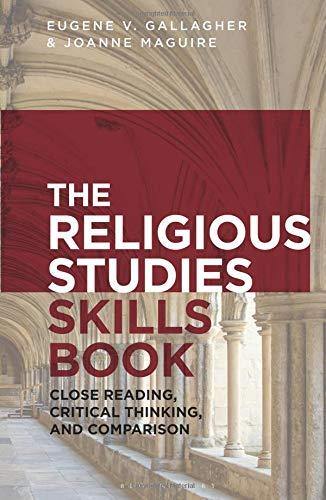

The Religious Studies Skills Book: Close Reading, Critical Thinking, and Comparison
Additional Info:
Click Here for Book Review
This book supports students engaged in the study of religions by helping them understand key processes particular to the field, including bracketing and comparison, and general humanities skills, like critical thinking and close reading. The authors offer useful examples throughout the book and augment those with further exercises available online. - Molly H. ...
Click Here for Book Review
This book supports students engaged in the study of religions by helping them understand key processes particular to the field, including bracketing and comparison, and general humanities skills, like critical thinking and close reading. The authors offer useful examples throughout the book and augment those with further exercises available online. - Molly H. ...
Additional Info:
Click Here for Book Review
This book supports students engaged in the study of religions by helping them understand key processes particular to the field, including bracketing and comparison, and general humanities skills, like critical thinking and close reading. The authors offer useful examples throughout the book and augment those with further exercises available online. - Molly H. Bassett, Georgia State University
Studying religion in college or university? This book shows you how to perform well on your course tests and examinations, write successful papers, and participate meaningfully in class discussions. You'll learn new skills and also enhance existing ones, which you can put into practice with in-text exercises and assignments.
Written by two award-winning instructors, this book identifies the close reading of texts, material culture, and religious actions as the fundamental skill for the study of religion at undergraduate level. It shows how critical analytical thinking about religious actions and ideas is founded on careful, patient, yet creative “reading” of religious stories, rituals, objects, and spaces.
The book leads you through the description, analysis, and interpretation of examples from multiple historical periods, cultures, and religious traditions, including primary source material such as Matthew 6:9-13 (the Lord's Prayer), the gohonzon scroll of the Japanese new religion Soka Gakkai, and the pilgrimage to Mecca (hajj). It provides you with typical assignments you will encounter in your studies, showing you how you might approach tasks such as reflective, interpretive or summary essays. Further resources, found on the book's website, include bibliographies, and links to useful podcasts. (From the Publisher)
Table Of Content:
Acknowledgements
Introduction: How to Use This Book
Ch 1. Religion in Higher Education
Ch 2. The Syllabus and Course Expectations
Ch 3. Learning Through Bracketing
Ch 4. Close Reading
Ch 5. Critical Thinking
Ch 6. Comparison
Ch 7. Writing About Religion
Ch 8. Beyond the Classroom
Index
Click Here for Book Review
This book supports students engaged in the study of religions by helping them understand key processes particular to the field, including bracketing and comparison, and general humanities skills, like critical thinking and close reading. The authors offer useful examples throughout the book and augment those with further exercises available online. - Molly H. Bassett, Georgia State University
Studying religion in college or university? This book shows you how to perform well on your course tests and examinations, write successful papers, and participate meaningfully in class discussions. You'll learn new skills and also enhance existing ones, which you can put into practice with in-text exercises and assignments.
Written by two award-winning instructors, this book identifies the close reading of texts, material culture, and religious actions as the fundamental skill for the study of religion at undergraduate level. It shows how critical analytical thinking about religious actions and ideas is founded on careful, patient, yet creative “reading” of religious stories, rituals, objects, and spaces.
The book leads you through the description, analysis, and interpretation of examples from multiple historical periods, cultures, and religious traditions, including primary source material such as Matthew 6:9-13 (the Lord's Prayer), the gohonzon scroll of the Japanese new religion Soka Gakkai, and the pilgrimage to Mecca (hajj). It provides you with typical assignments you will encounter in your studies, showing you how you might approach tasks such as reflective, interpretive or summary essays. Further resources, found on the book's website, include bibliographies, and links to useful podcasts. (From the Publisher)
Table Of Content:
Acknowledgements
Introduction: How to Use This Book
Ch 1. Religion in Higher Education
Ch 2. The Syllabus and Course Expectations
Ch 3. Learning Through Bracketing
Ch 4. Close Reading
Ch 5. Critical Thinking
Ch 6. Comparison
Ch 7. Writing About Religion
Ch 8. Beyond the Classroom
Index